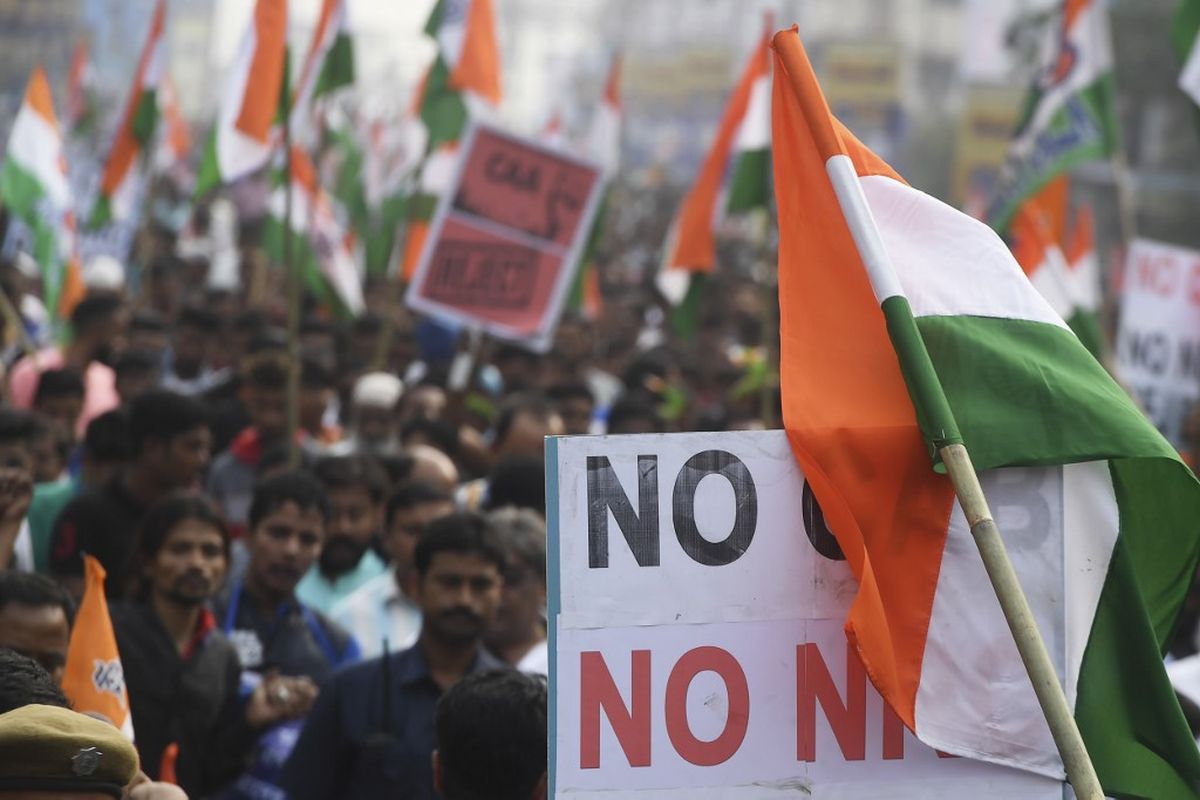BRS giving walkover to BJP for Kavitha’s bail: Revanth
Reddy on Wednesday accompanied the Congress candidate for the Secunderabad seat when Danam Nagender submitted his nomination papers.
Interestingly, realising the potential of student power, most political parties create a strong youth wing. The BJP has the ABVP, the Congress has the NSUI and the CPI-M the SFI and so on.

Interestingly, realising the potential of student power, most political parties create a strong youth wing. (Photo by Dibyangshu SARKAR / AFP)
The protests against the Citizenship Amendment Act and NRC have escalated to alarming proportions as they are spreading to states other than those that had reacted initially. Critics believe that the Centre wants to turn the package into an electoral issue and apprehend that it would ultimately lead to harassment of 14 crore Muslims.
This argument has become central to the protests almost throughout the country. Now it has gone beyond student agitations as the citizens have taken over. The BJP argues that all decisions were passed by Parliament and kept in public domain from 2016 onwards. The issue even figured in the party’s manifesto, and hence BJP cannot be blamed for pushing an agenda without letting the world know. As the chorus against the Citizenship Act grows louder, protesters show signs of revolt in Assam, Manipur, Tripura, West Bengal, Tamil Nadu, Karnataka, Kerala and UP.
Though, it has triggered protests across India, Assam, the epicentre of a decades-old movement against illegal migrants, has seen the highest toll. Troops have been deployed in the northeastern states, amid the violent protests. New Delhi too saw violent protests after alleged police atrocities on students at Jamia Millia Islamia University last week. The students have shown that they can take on the Modi government with no nationwide organizational structure or premeditated blueprint.
Advertisement
Students have risen spontaneously, throughout the country. Interestingly, in the case of West Bengal and Kerala, it is the ruling parties themselves that are leading the agitation making it a political issue with the fight between the BJP and the opposition. This brings us to the issue of harnessing youth power in a positive way.
Interestingly, realising the potential of student power, most political parties create a strong youth wing. The BJP has the ABVP, the Congress has the NSUI and the CPI-M the SFI and so on. Even regional parties have youth wings. Basically political parties often use these constituents to fight their proxy battle by manipulating them instead of allowing the students to concentrate on their issues. Most students want to stay apolitical but they are sucked into politics whether they like it or not.
A silent majority wants to study and concentrate on their future but the political minority hijacks them. It is indeed a dirty game. India has a long and complex tradition of student unions dating back to the freedom movement. The advocacy groups may be organized either within universities or outside with affiliations to political parties like the Congress, Bhartiya Janata Party (BJP), or Marxist and Left-leaning groups.
Their participation was significant in several universities like BHU and Patna, which produced many of today’s political leaders. Even in present-day politics many leaders have come from the student movement in almost all the parties. The BHU produced several leaders during the pre and post independence period. Patna University produced many socialist leaders of today. The Congress has many leaders from the Youth Congress, the BJP from the ABVP and the CPI-M from the SFI.
With the infiltration of political parties in students’ union elections, some ambitious students see these as a stepping-stone to national politics and a good political future. Reduction of the voting age by Rajiv Gandhi during his regime is yet another reason for those aged 18 and above to take interest in politics. By the 1970s, the youth movement had become communal and partisan. The anti-reservation movement when Prime Minister V P Singh introduced backward classes reservation in 1989 saw the ugly face of casteism.
Political parties like the Congress, which was in the opposition, then played a role in ousting the government using the students’ unrest. It is also pertinent to note that the nature of student politics is changing. The universities have become powerful battlegrounds for political parties. Heads of colleges also fear political interference and are therefore careful in their handling of their students. The BHU, which was in the foremost during the freedom movement, has now become a ground for sectarian politics. Aligarh University is no better. This is not the first time that the youth movement has taken centrestage. The AASU even managed to form a government.
In recent times youth power was seen during the antiNirbhaya incident, pro jallikattu movement in Tamil Nadu, government nomination for the Film and Television Institute of India and the Jan Lokpal bill agitation. Unfortunately, universities have become hunting ground for political parties. What is needed today is to channelize youth power and political parties have a huge responsibility in this regard. They should desist from using them for their opportunism. Guided properly, they will emerge as the future leaders of India. When they agitate for some right cause, the country should support them. Sixty-five per cent of India consists of youth population and it is necessary to make sure that they go in the right direction to make India a global power.
Advertisement